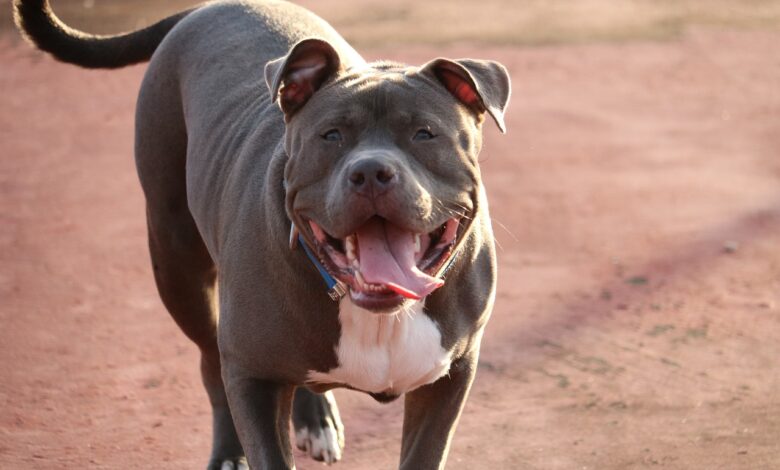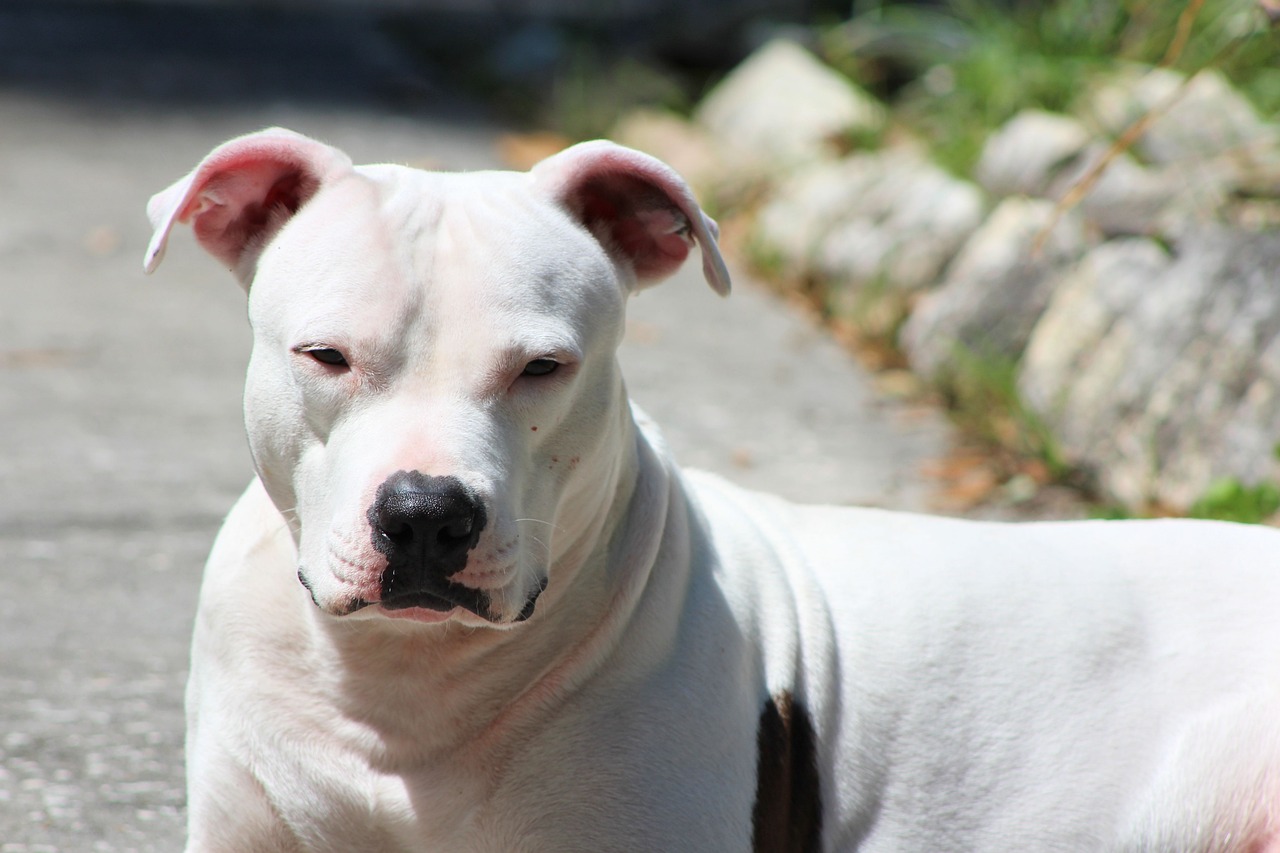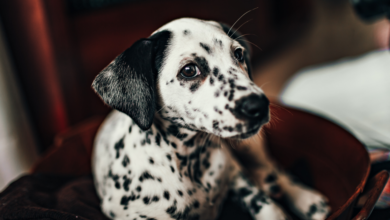Can a Pit Bull Live in An Apartment?

When we think about Pit Bulls, the image that often comes to mind is one of a robust, energetic dog with substantial exercise needs. This stereotype can make it difficult to picture a Pit Bull living happily in an apartment setting. However, with the right training, sufficient exercise, and mental stimulation, Pit Bulls can adapt to apartment living just as well as many other breeds. This article will explore the factors that apartment-dwelling Pit Bull owners need to consider, from exercise routines to local regulations.
1. Understanding Pit Bulls’ Needs
Pit Bulls are known for their intelligence, affection, and high energy levels. They require regular physical exercise and mental engagement to stay healthy and happy. In an apartment, these needs don’t dissipate; they must be met through structured activities and consistent routines. It’s crucial for potential Pit Bull owners living in apartments to understand the commitment required to meet these needs in a smaller living space.
2. Exercise: The Cornerstone of Apartment Living
The most significant challenge of keeping a Pit Bull in an apartment is ensuring they get enough exercise. They need at least one to two hours of exercise each day. This can be broken into walks, playtime, and training sessions. Living in an apartment means finding creative ways to meet these needs, such as using dog parks, long walks, or even treadmills designed for dogs.
3. Mental Stimulation: Beyond Physical Exercise
Mental stimulation is just as important as physical exercise for a Pit Bull. Puzzle toys, hide-and-seek games, and training sessions contribute to their mental well-being. Teaching new tricks or practicing obedience commands can tire out a Pit Bull mentally, often as much as a long walk.
4. Space Management Within the Apartment
Space management is crucial for apartment dwellers. Pit Bulls don’t necessarily need a lot of space, but they do need a well-organized environment. Furniture can be arranged to maximize open space, and dedicated areas for eating, sleeping, and playing should be established.
5. Socialization and Behavior Training
Socialization is vital for Pit Bulls, especially when living in close quarters with neighbors. Behavior training helps manage tendencies like barking, jumping, and leash pulling, which can be more problematic in an apartment setting. Regular, ongoing training from a young age can help mitigate potential issues.
6. Addressing Pit Bulls’ Energy Levels
A Pit Bull’s energy must be channeled positively to prevent destructive behaviors. Regular exercise routines, interactive play sessions, and companionship are key. For working individuals, doggy daycare or a dog walker can be invaluable resources to help a Pit Bull expend energy during long workdays.
7. The Importance of Routine
A consistent routine helps a Pit Bull understand what to expect in their day-to-day life, providing a sense of security and structure. This routine should include set times for walks, meals, play, and quiet time. In an apartment, this helps to manage their energy levels and maintain a peaceful home environment.
8. Legal Considerations and Breed Restrictions
Before deciding to bring a Pit Bull into an apartment, it’s essential to check local laws and the apartment complex’s policies regarding breed restrictions. Some areas have specific legislation regarding Pit Bulls, and many apartments have restrictions on breeds they consider to be “aggressive.”
9. The Role of the Owner in Apartment Living
The owner’s role cannot be overstated when it comes to keeping a Pit Bull in an apartment. It requires a commitment to active involvement in the dog’s daily life, ensuring that the Pit Bull is well-exercised, trained, and cared for. The owner must be an advocate for their dog, often educating others about the breed’s true nature.
10. Health Considerations in a Smaller Space
In an apartment, monitoring a Pit Bull’s health can become more straightforward due to the closer living quarters. Owners should be vigilant about their pet’s weight, as lack of space can lead to less movement and potential weight gain. Regular vet check-ups are essential to ensure the dog remains in good health.
11. Community Involvement
Being part of a community that accepts and understands Pit Bulls can greatly enhance the experience of raising one in an apartment. Connecting with local Pit Bull groups or clubs can provide support, resources, and socialization opportunities for both the dog and the owner.
Conclusion
Living with a Pit Bull in an apartment is not only possible, but it can also be a rewarding experience for both the dog and the owner. It requires a dedicated, proactive approach to ensure that the dog’s physical and mental needs are met. With the right amount of exercise, training, and love, a Pit Bull can thrive in an apartment setting, becoming a beloved member of the family and the larger community.
Frequently Asked Questions An Apartment Owner Might Ask Before Getting A Pit Bull
1. What are the exercise requirements for a Pit Bull in an apartment setting?
Pit Bulls are energetic and require daily exercise to maintain their health and happiness. In an apartment setting, this typically means at least 1-2 hours of physical activity each day. This can be accomplished through walks, playtime at a dog park, or indoor games. It’s essential to have a consistent exercise routine to prevent behavioral issues due to pent-up energy.
2. Can Pit Bulls adapt to living in smaller spaces like apartments?
Yes, Pit Bulls can adapt to living in smaller spaces if their physical and mental needs are met. They are quite flexible and can be content in an apartment as long as they receive sufficient exercise, mental stimulation, and attention. Proper training and socialization are also key to ensuring they can thrive in a more confined living space.
3. How do I ensure my Pit Bull is well-behaved around my neighbors?
Training and socialization are crucial for a Pit Bull living in close quarters with neighbors. Early and consistent training can help manage tendencies like barking and jumping. It’s also beneficial to introduce your Pit Bull to neighbors in controlled settings to promote good behavior and dispel any misconceptions about the breed.
4. Are there specific apartment-friendly exercises for Pit Bulls?
Apartment-friendly exercises for Pit Bulls include indoor agility training, tug-of-war, and interactive toys that stimulate their mind and body. You can also consider obedience training sessions and short, intense play sessions inside. For outdoor activities, long walks, runs, or trips to the dog park are great for expending energy.
5. What should I look for in an apartment if I own a Pit Bull?
When searching for an apartment as a Pit Bull owner, look for pet-friendly policies without breed restrictions. It’s also helpful to find an apartment with easy access to outdoor spaces like parks. Additionally, consider an apartment with soundproofing to minimize noise, which can be beneficial for both your dog and your neighbors.
6. How can I help my Pit Bull deal with the lack of a backyard?
To compensate for the lack of a backyard, take your Pit Bull on multiple walks throughout the day and visit dog parks regularly. Use indoor playtime and training to keep them mentally stimulated. Additionally, create a comfortable indoor space with toys and a cozy bed to help your dog feel at home.
7. Are Pit Bulls good with children and other pets in an apartment complex?
Pit Bulls can be good with children and other pets if they are properly socialized from a young age. It’s important to supervise interactions and teach children how to interact with dogs respectfully. Proper introductions and consistent training can help ensure harmonious relationships with other pets in the apartment complex.
8. What are some common misconceptions about Pit Bulls that apartment owners should be aware of?
Common misconceptions include the belief that Pit Bulls are inherently aggressive and not suitable for apartment living. In reality, Pit Bulls are often affectionate and loyal. With proper training, socialization, and regular exercise, they can be excellent apartment pets. Education and responsible ownership are key to addressing these stereotypes.
9. How can I find an apartment that allows Pit Bulls?
To find an apartment that allows Pit Bulls, start by researching pet-friendly housing online and inquire directly about breed restrictions. Networking with local Pit Bull groups and using social media can also provide leads on suitable housing. Always be upfront about your dog’s breed when discussing with potential landlords.
10. What kind of training is recommended for a Pit Bull living in an apartment?
For a Pit Bull in an apartment, basic obedience training is recommended, including commands like sit, stay, and come. Crate training can also be beneficial, providing a secure space for your dog when unsupervised. Additionally, leash training is crucial for safe and enjoyable walks in communal areas. Regular training helps prevent problem behaviors and ensures a well-adjusted pet.





